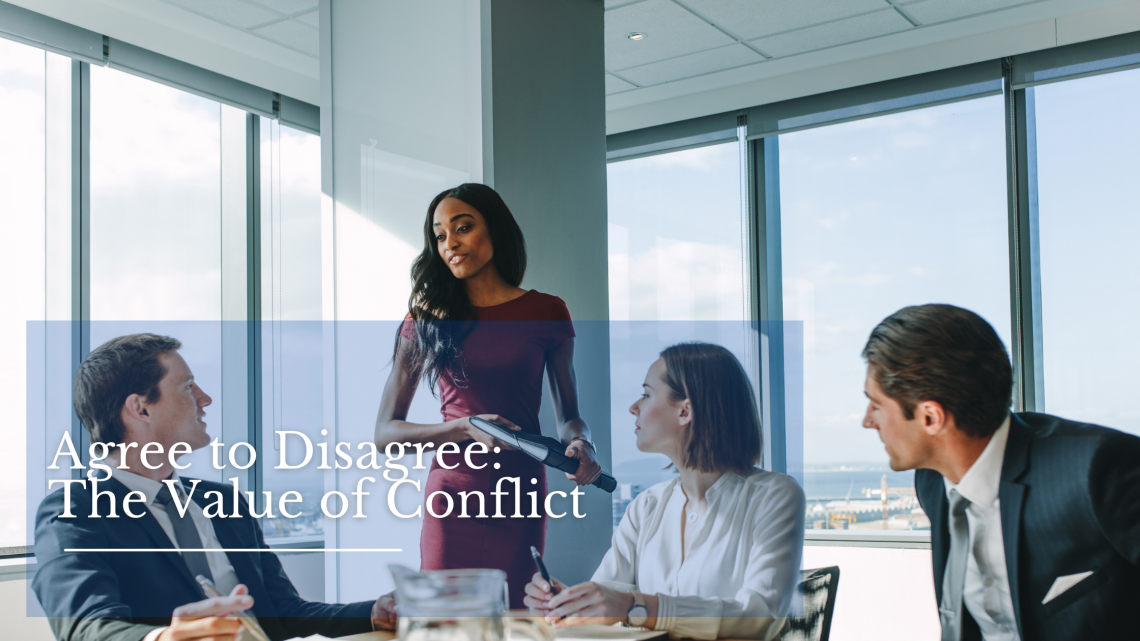Over the last six months or so, it’s been so tempting to say we are post-pandemic. Sometimes I’ve tried to frame things as ‘the new normal’. (Any psych 101 student can start an argument over what normal is, but let’s set that aside.) My point was merely that the old existence is not coming back. But life has gotten disturbingly more complicated, even as the acute fear and stress of the pandemic has softened (a little). The conflict in Ukraine is protracted and devastating, inflation has added stress to even daily transactions, and supply chains are compromised globally. It’s a lot, by any measure. For leaders, the challenges facing organisations are also big, thorny problems, not easily solved.
With major stressors facing us, conflict in the workplace (whether in-person or virtual) has risen. In part, we are simply less equipped than we were. As we socialized less over the last two years, we lost some of our ability to negotiate and empathise. We can get that back – but it takes time.
How do leaders manage more challenges, and remember the value of conflict?
Recognise the sheer amount of change. At this point, we have somewhat normalised much of what we’ve been through. But the reality is, there’s nothing normal about a pandemic or a ruthless invasion by a nuclear power. And in recent years, corporations have been held accountable by the public for how and where they operate on every level. That includes how they have supported employees during COVID-19 to whether they withdrew from Russia after its invasion of Ukraine. These decisions can be difficult, costly and hard to manage. It’s easy to take on additional stress without identifying the underlying causes. But you need to constantly remind yourself that you are under new stressors: and so are your managers, their teams, your suppliers, shareholders and everyone else.
You are on the same side. One benefit of being in a workplace together is that you share the same space literally, a constant reminder that you’re all working towards the same goals. If you are only recently back in the office, or still working from a remote location, you can lose sight of that. When others don’t see things the same way, it can help to remember that we all take in information differently. This is true even if it’s the exact same information at the exact same time. But that doesn’t mean you don’t want the same outcome. You may identify different problems or draw different conclusions – but start conversations with an acknowledgement that everyone is acting in the organisation’s best interests. This helps frame disagreement in a context of good intentions.
Leaders who understand the value of conflict will be more effective.
A healthy amount of disagreement is nothing to run from. Diversity of thought brings more perspective to any situation. Given the complex and unprecedented challenges that organisations are facing, there rarely will be one ‘truth’. The most you can hope for is a robust understanding of the problem and the available solutions, and some necessary disagreement
will lead to that. Don’t shut down alternate points of view – they will lead to better decisions. The CFO will weigh challenges differently from the COO. A leader based in America will have a different reaction than one in Japan. Do the hard work of hearing everyone and embracing the lack of agreement as a reflection of just how complicated the task is. This isn’t new, but it may feel harder than ever. That’s ok – just keep trying. The value of conflict is the reward doesn’t come until the end.
In terms of my background and expertise, I have spent my entire career working as a trusted advisor to senior leaders wanting to improve the effectiveness of themselves, their teams, and their companies. Prior to starting my own consulting firm, I led the global executive assessment and development team for Cisco. Earlier in my career, I held leadership roles with RHR International, PepsiCo, Ashridge Executive Education, Hult International Business School, and the Central European University, Budapest, Hungary.









